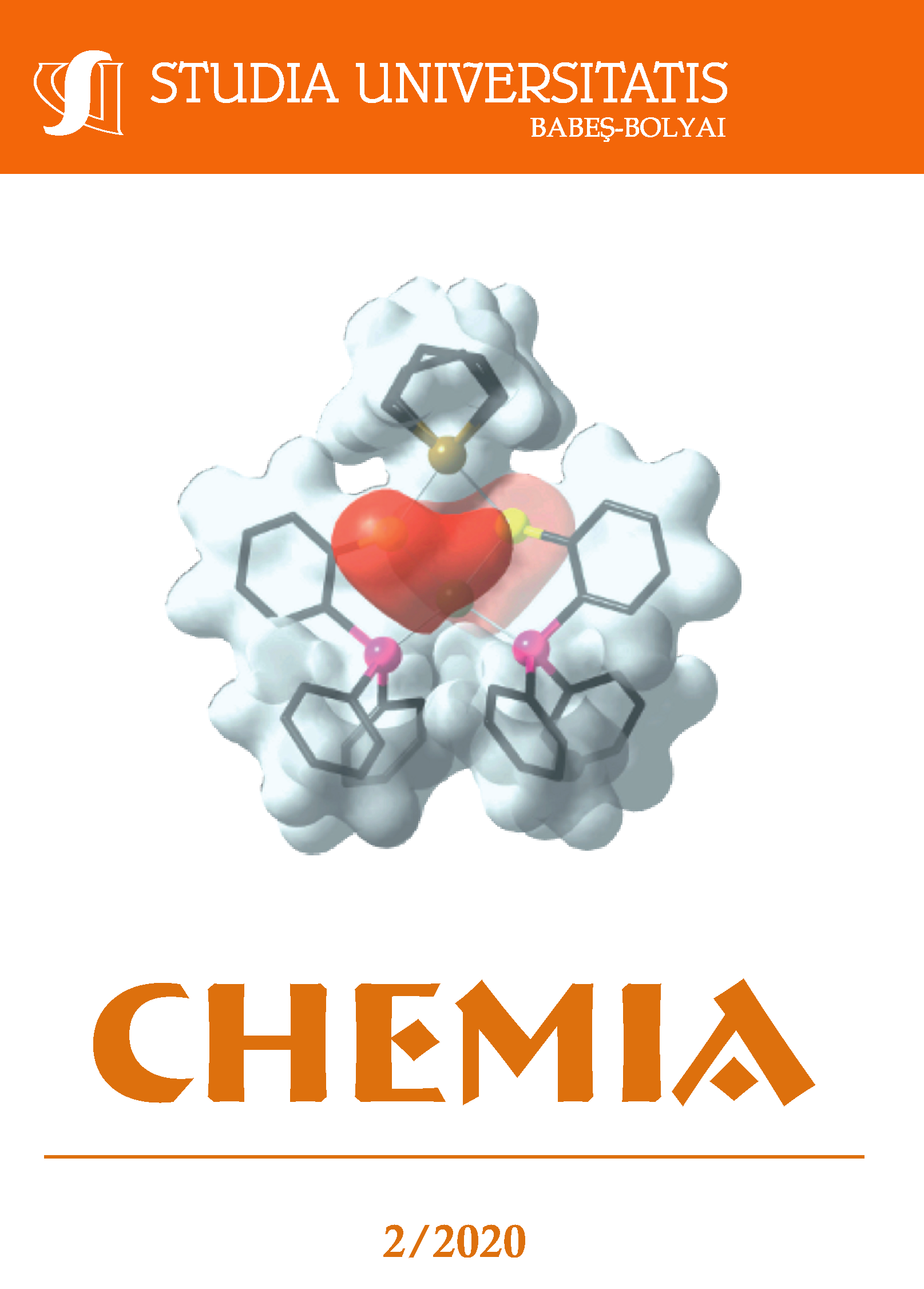COMPARATIVE CHARACTERIZATION OF SOMATIC HYBRIDS OF SOLANUM BULBOCASTANUM + S. TUBEROSUM CV. ‘RASANT’ WITH THEIR PARENTS IN RELATION TO BIOCHEMICAL RESPONSES TO WOUND STRESS AND TRICHOME COMPOSITION
DOI:
https://doi.org/10.24193/subbchem.2020.2.11Keywords:
antioxidant activity, cytogenetic, flavonoids, polyphenols, somatic hybrids, trichomesAbstract
Potato production is severely affected worldwide due to its susceptibility to pathogens and pests. Solanum bulbocastanum, a potential source of resistance genes, is sexually incompatible with potato. Therefore, somatic hybridization is an alternative tool for enrichment of the potato resistance gene pool. Some important mechanisms involved in resistance are trichomes and various plant secondary metabolites. These resistance mechanisms were recorded in S. bulbocastanum, potato cv. Rasant and two of their somatic hybrids with different chromosome numbers in order to evaluate the acquisition of these resistance traits by somatic hybridization. The foliar trichomes were characterized microscopically for morphology and density. Total polyphenolic (TPC) and flavonoid (TFC) content and antioxidant activity (AA) were quantified, both before and after mechanical wounding. Wounding increased TPC, TFC and AA in all tested genotypes. S. bulbocastanum was far superior for all parameters when compared with S. tuberosum cv. Rasant. The 1508/5 somatic hybrid proved to be similar to the wild species for trichome morphology and density, whereas it has intermediate phenotype for the TPC, TFC and AA compared to the genitors. Therefore, somatic hybridization proves to be a useful tool for resistance mechanisms transfer from a wild species to a somatic hybrid, the 1508/5 genotype being a good candidate for future use in pre-breeding programs.
References
A.J. Haverkort; P.C. Struik; R.G.F. Visser; E. Jacobsen; Potato Res, 2009, 52, 249-264.
L.F. Salazar; Potato viruses after the XXth century: effects, dissemination and their control; Crop Protection Department, Lima 12, Peru, 2003.
J. Elphinstone; I. Toth; Erwinia chrysanthemi (Dickeya spp.): The Facts; British Pototo Council Publications, 2007.
G.A. Forbes; W. Pérez; J. Andrade-Piedra; Field assessment of resistance in potato to Phytophthora infestans; International Center of Potato 2014.
R. Thieme; E. Rakosy-Tican; Somatic Cell Genetics and Its Application in Potato Breeding. In The Potato Genome; S.K. Chakrabarti, C. Xie and J.K. Tiwari Eds.; Springer International Publishing AG Cham, Switzerland, 2017, pp. 217-269.
D. Carputo; D. Alioto; R. Aversano; R. Garramone; V. Miraglia; C. Villano; L. Frusciante; Plant Genet. Resour., 2013, 11, 131-139.
R. Thieme; E. Rakosy-Tican; T. Gavrilenko; O. Antonova; J. Schubert; M. Nachtigall; U. Heimbach; T. Thieme; Theor. Appl. Genet., 2008, 116, 691-700.
R. Thieme; E. Rakosy-Tican; M. Nachtigall; J. Schubert; T. Hammann; O. Antonova; T. Gavrilenko; U. Heimbach; T. Thieme; Plant Cell Rep., 2010, 29.
E. Rakosy-Tican; R. Thieme; M. Nachtigall; I. Molnar; T. E. Denes; Plant Cell. Tiss. Org. Cult., 2015, 122, 395-407.
G.G. Kennedy; Annu. Rev. Entomol., 2003, 48, 51-72.
A.T. Simmons; G. M. Gurr; D. McGrath; P. M. Martin; H. I. Nicol; Aust. J. Entomol., 2004, 43, 196-200.
A. Lai; V. Cianciolo; I. Chiavarini; A. Sonnino; Euphytica, 2000, 114, 165-174.
S.G. Channarayappa; V. Muniyappa; R. H. Frist; Can J Bot, 1992, 70, 2184-2192.
A.M. Mărgineanu; I. Erdelyi-Molnár; E. Rákosy-Tican; Analele Ştiinţifice ale Universităţii „Al. I. Cuza” Iaşi s. II a. Biologie vegetală, 2014, 60, 33-42.
O. Blockhina; E. Virolainen; KV. Fagerstedt; Ann. Bot., 2002, 91, 179-194.
K.K. Mallikarjuna N, Jadhav DR, Kranthi S, Chandra S J. App. Entomol., 2004, 128, 321-328.
C.H. Foyer; B. Rasool; J.W. Davey; R.D. Hancock; J. Exp. Bot., 2016, 67, 2025-2037.
J. Mierziack; K. Kostyn; A. Kulma; Molecules, 2014, 19, 16240-16265.
G. Guillet; V. De Luca; Plant Physiol., 2005, 137, 692-699.
M. Sisa; S.L. Bonnet; D. Ferreira; J.H. Van der Westhuizen; Molecules, 2010, 15, 5196-5245.
D. Cruceriu; I. Molnar; Z. Diaconeasa; A. Aurori; C. Socaciu; E. Rakosy-Tican; Notulae Botanicae Horti Agrobotanici, 2017, 45, 75-81.
J.S. Lorenc-Kukula K, Oszmianski J, Szopa, J. Agric. Food. Chem., 2005, 53, 272-281.
D. Treutter; Environ. Chem. Lett., 2006, 4, 147-157.
I. Yedidia; M. Shoresh; Z. Kerem; N. Benhamou; Y. Kapulnik; I. Chet; Appl. Environ. Microbiol., 2003, 69, 7343-7353.
G.S. Nuessly; B.T. Scully; M.G. Hentz; R. Beiriger; M.E. Snook; N.W. Widstrom; J. Econ. Entomol., 2007, 100, 1887-1895.
L.F. Reyes; L. Cisneros-Zevallos; J. Agric. Food. Chem., 2003, 51, 5296-5300.
L.C. Luckwill; Aberd. Univ. Stud., 1943, 120, 1-44.
H.B. Johnson; Bot. Rev., 1975, 41, 233-253.
G.A. Beattie; S.E. Lindow; Phytopathology, 1999, 89, 353-359.
J. Ehleringer; Ecology and ecophysiology of leaf pubescence in North American desert plants. In Biology and chemistry of plant trichomes; E. Rodriguez, P.L. Healey and I. Mehta Eds.; Plenum Press, New York, 1984, pp. 113-132.
D.L. De Silva; T.A. Mansfield; M.R. McAinsh; Planta, 2001, 214, 158-162.
A.L. Schilmiller; I. Schauvinhold; M. Larson; R. Xu; A.L. Charbonneau; A. Schmidt; C. Wilkerson; R.L. Last; E. Pichersky; Proc. Natl. Acad. Sci. U.S.A., 2009, 106, 10865-10870.
E.T. McDowell; J. Kapteyn; A. Schmidt; C. Li; J.H. Kang; A. Descour; F. Shi; M. Larson; A. Schilmiller; L. An; A.D. Jones; E. Pichersky; C.A. Soderlund; D.R. Gang; Plant Physiol., 2011, 155, 524-539.
G.J. Wagner; E. Wang; R. W. Shepherd; Ann. Bot., 2004, 93, 3-11.
G.G. Simmons AT; Agric. Forest. Entomol., 2005, 7, 265-276.
A. Kumar; V.S. Pundhir; Potato Res., 1991, 34, 9-16.
S. E. Hartley; R.D. Firn; J. Chem. Ecol., 1989, 15, 275-283.
H.M. Kang; M.E. Saltveit; J. Agric. Food. Chem., 2002, 50, 7536-7541.
C.E. Lewis; J.R.L. Walker; J.E. Lancaster; K.H. Sutton; J. Sci. Food. Agric., 1998, 77, 58-63.
G.R. Cramer; K. Urano; S. Delrot; M. Pezzotti; K. Shinozaki; BMC Plant Biol., 2011, 11, 163.
C.H. Foyer; G. Noctor; Plant Cell., 2005, 17, 1866-1875.
T. Murashige; F. Skoog; Physiologia Plantarum, 1962, 15, 473-497.
M.A.A. El-Sayed; P. Hucl; J. Agric. Food Chem., 2003, 51, 2174-2180.
A. Bunea; D.O. Dugină; A.M. Pintea; Z. Sconta; C.I. Bunea; C. Socaciu; Not. Bot. Horti. Agrobo., 2011, 39, 70-76.
V.L. Singleton; R. Orthofer; R.M. Lamuela-Raventós; P. Lester; Method. Enzymol., 1999, 299, 152-178.
D.O. Kim; S.W. Jeong; C.Y. Lee; Food Chem., 2003, 81, 321-326.
M.B. Arnao; A. Cano; J.F. Alcolea; M. Acosta; Phytochem. Anal., 2001, 12, 138-143.
Downloads
Published
How to Cite
Issue
Section
License
Copyright (c) 2020 Studia Universitatis Babeș-Bolyai Chemia

This work is licensed under a Creative Commons Attribution-NonCommercial-NoDerivatives 4.0 International License.



